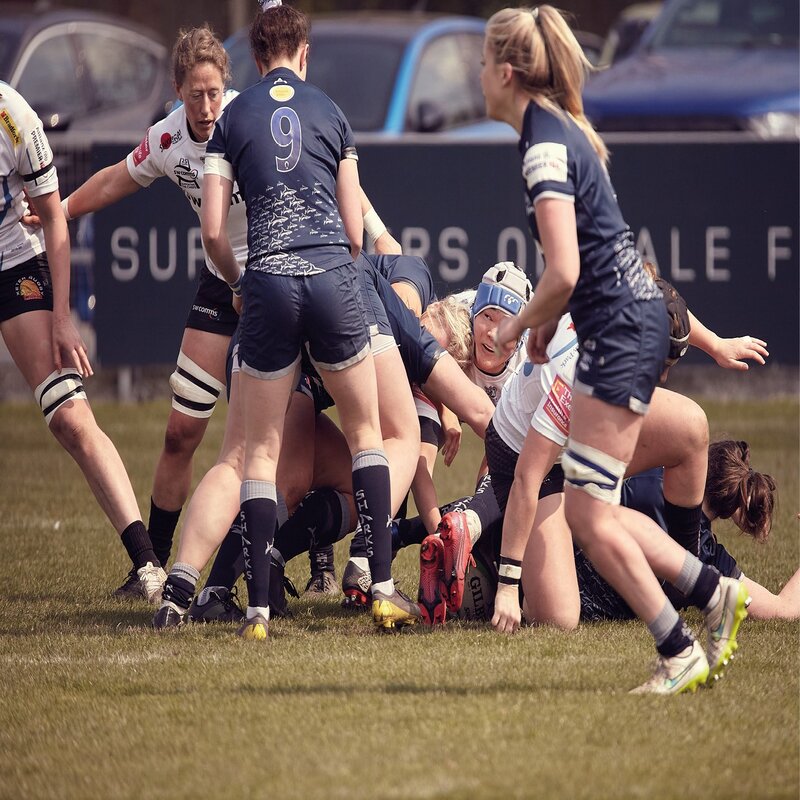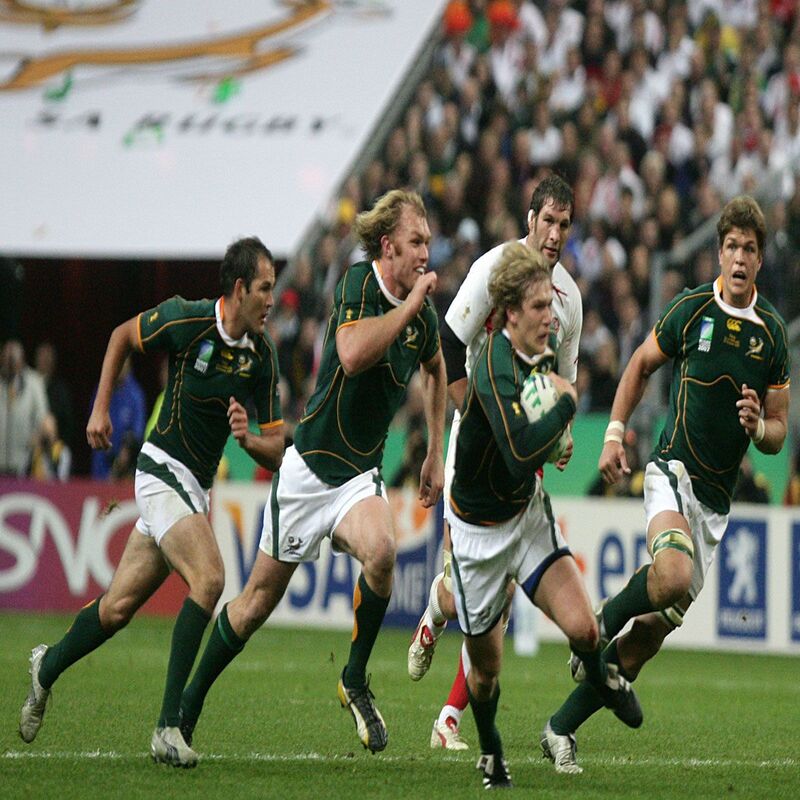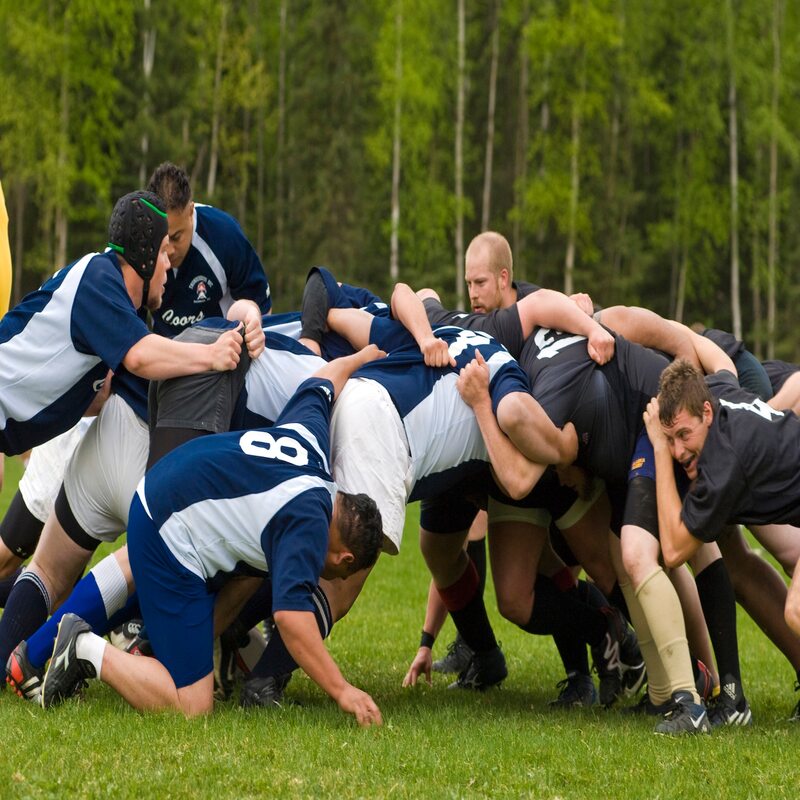The Fundamentals of Rugby Union Team Composition
In rugby union, teams are built on a precise balance. Each of the fifteen players has a unique role, honed over the sport’s history. This balance is key to a team’s success on the field.
The Role of Forwards in Rugby Union
Forwards in rugby union are the game’s powerhouse. They wear jerseys numbered one to eight. Their job is tough—they push in scrums, battle for possession in rucks, and power through mauls. Forwards are crucial for winning the ball and setting up play.
The Role of Backs in Rugby Union
Backs are the rugby union’s playmakers. With jerseys nine to fifteen, they bring speed and skill. They look to break through defenses and turn the game with a swift run or a strategic kick. Backs work to turn the forward’s hard-won ball into scoring chances.
The Significance of Reserves in Rugby Union
In rugby union, the reserves hold key importance. Known as ‘replacements’ or ‘finishers’, these eight players are ready to step in during the match. They provide strategic flexibility and fresh energy. The game’s intensity means injury and fatigue are common. Reserves are essential to address these challenges. They enable tactical changes and maintain performance levels. Each reserve is a specialist, primed for specific situations. Their presence ensures the team can adapt to the game’s flow. World Rugby governs their use, allowing teams to sustain competitiveness throughout the game.

Rugby League: A Distinct Formation with Thirteen Players
Rugby league stands out with its team of thirteen. It’s different from rugby union’s fifteen-player teams. This sport emphasizes speed over the brute force often associated with rugby union. Players are assigned numbers 1 through 13. Each one plays a vital role in the team’s strategy and success on the field.
The Fast-Paced Nature of Rugby League
Rugby league is all about pace. Quick passing and strong running define its style. The game’s tempo is fast, and the play is continuous. League players must have agility and the ability to make snap decisions. They use tactical kicking to gain advantage. This variant offers fans a dynamic and distinctive experience.
Rugby Sevens: The Olympic Variant with Seven Players
Rugby Sevens is an Olympic game with fast pace and high energy. Teams have seven players each. This variant is known for its quick matches and high scores. It pits fewer players on a full-size pitch. This allows for more space and opportunities for explosive plays.
The Appeal and Strategy of Rugby Sevens
People love Rugby Sevens for its pace and excitement. It demands top fitness and skilled handling. Teams must use strategies that exploit space and speed. Quick turnovers and rapid scoring are common. This form of rugby tests players’ abilities to the max. As an Olympic sport, it draws global fans and showcases rugby’s thrilling side.
Exploring Other Rugby Variants and Team Sizes
Apart from traditional rugby, variants suit different preferences and settings. These games modify the number of players, adding new twists to the sport.
Touch Rugby: Adapting Player Counts for Non-Contact Fun
Touch Rugby offers a fun, non-contact version of the game, ideal for all skill levels. Without the tackles of traditional rugby, this variant emphasizes speed and agility. Teams typically have five to six players, which can vary depending on the tournament rules. This flexibility makes Touch Rugby a great option for casual games and is especially popular in mixed-gender matches.
Beach Rugby: Adjusting to the Sands with Four or Seven Players
Beach Rugby adapts to sandy terrains and usually involves smaller teams. Matched to the beach’s informality, teams can play with four or seven players each. The smaller teams and soft sand intensify the need for agility and stamina. Beach Rugby often has shorter matches, contributing to a lively and energetic atmosphere.
Tracing Rugby’s Evolution: From Many to Few
The Historical Shift from Twenty to Fifteen Players
Rugby has transformed significantly since its early days. Initially, teams might include up to twenty players. That often led to long scrums and less dynamic gameplay. To enhance appeal and increase game pace, a shift occurred. Teams began to adopt fifteen players each. This change streamlined the game, focusing on skill over sheer force. Today, rugby union’s fifteen-player teams reflect this evolution. The transition allowed for a more balanced game. It offered more space for backs to maneuver and for the sport to grow in dynamism.
The Split: Understanding the Rugby Union and Rugby League Divisions
The rugby world faced a monumental shift in 1895. This year marked the birth of rugby league. During this split, rugby union and rugby league took different paths. Twenty-one clubs in northern England formed a new league. They pushed for fewer players, eventually setting on thirteen a side in 1906. This division was not only about player count. It also introduced new playing styles and rules. Rugby league emphasized a faster, more open style of play. This split still defines the two forms of the sport we know today. It highlights the sport’s adaptability and its response to player and fan demands.

The Growth and Adaptability of Rugby Sevens
Rugby Sevens has evolved markedly since its inception. This version of rugby highlights speed and team coordination. With teams of seven, it allows for a fast-paced and high-scoring game. Its adaptability is evident in its global reach and Olympic inclusion. Rugby Sevens can be played on a full-size pitch, emphasizing the importance of space. Players showcase top fitness levels and a wide range of skills.
The Origins of Sevens and its Modern Tournaments
Rugby Sevens began in Scotland in the 1880s. The first recorded tournament was the Melrose Sevens. This format gained popularity for its brief, exciting matches. In the 1920s, tournaments like the Middlesex Sevens began. Now, Rugby Sevens is part of the Olympic Games and various global competitions. Its swift nature draws in fans from all over. It demands skill, fitness, and strategy from its players. Modern tournaments celebrate this variant’s unique appeal and its thrilling, fast gameplay.
Grassroots Rugby: The Foundation of the Game
Youth Programs and Development
Grassroots rugby forms the bedrock of the sport’s thriving culture. Various youth programs introduce children and teens to rugby. These initiatives teach core values like teamwork, respect, and discipline. Importantly, they encourage physical fitness and mental resilience.
Through local clubs and schools, aspiring athletes can find pathways to professional play. Many teams establish junior leagues, allowing younger players to experience the sport. These formative experiences help develop essential skills, whether in rugby union or league.
At this level, players begin understanding the significance of positions. Youth programs educate participants about forwards and backs, ensuring they know the game’s mechanics. This foundational knowledge prepares them for future challenges on the field.
Community Engagement
Grassroots rugby promotes community bonding. Local clubs often act as hubs for social interaction and camaraderie. Families come together at matches, fostering a sense of belonging. This engagement strengthens community ties and encourages sustained interest in the sport.
Moreover, successful grassroots programs inspire local talent. Players who excel at youth levels often transition into higher competitions. The visibility of local heroes motivates aspiring athletes to persevere and chase their dreams.
As these players advance in their careers, they often give back to their communities. Many participate in coaching or mentorship roles. This nurtures the next generation of rugby players, ensuring the sport remains vibrant.

Embracing Different Team Sizes in Touch Rugby
Touch Rugby is known for its inclusive and adaptable nature, where ‘how many players in rugby’ is a flexible concept. Different from the structured fifteen of rugby union or thirteen of rugby league, Touch Rugby is more casual and varies in team size, making it a perfect fit for social gatherings and friendly competitions.
The Flexibility of Player Numbers in Social Matches
Social matches in Touch Rugby often adapt player counts to suit the number of participants. While official games might follow set rules, informal play is different. In park games or local leagues, you might see teams with five to six players. This not only keeps the game moving but also allows more people to play. It’s common to see folks switching in and out, ensuring everyone gets a turn. This versatile player count makes Touch Rugby approachable and a favorite for players of all skill levels. Organizers can easily tailor matches for the players they have, creating a dynamic and welcoming environment.
